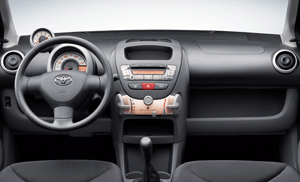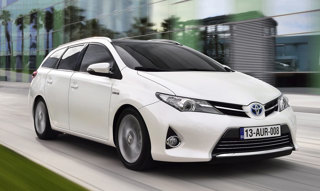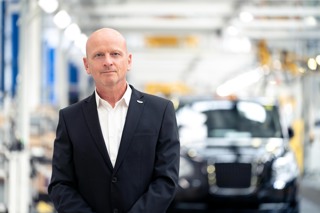Review
The manufacturer does not underestimate the challenge ahead for the car being built alongside Citroen and Peugeot equivalents. Commercial director Paul Philpott says: “Our likely buyers are in their 20s and 30s but we must not make them feel like a target audience, because they don’t like it.

“For many, Aygo will be their first new car and though some may later buy other makes, we want them to remember a good experience and return to Toyota.”
The marketing emphasis in on the model name, with ‘AYGO by Toyota” in a red disc on ads and marketing material. Toyota will talk to potential buyers in their language: Aygo (say “I go”) will this summer sponsor rock music festivals, featuring ‘Aygo like a rabbit’ and ‘Aygo in my tent’ sweatshirts.
The first issue of an Aygo magazine has been printed, and ‘do something memorable’ billboard posters will look like graffiti on walls, mentioning Aygo but not Toyota. Marketing speak goes like this: “Aygo is targeted at young, active urban individuals who enjoy a spontaneous approach to life and leisure.”
All Aygos have speed-sensitive power steering, tilt-adjustable steering column, front airbags, ABS with electronic brake distribution and CD player with MP3/iPod connection. Aygo Plus additions include electric front windows, side airbags, remote central locking and better audio – Aygo Sport adds alloys, tacho and front fog lamps.
At launch, all three models use Toyota’s new 1.0-litre, VVT-i 67bhp engine, which at 67kg is claimed to be the lightest car combustion unit available, with “class-leading” power and lowest fuel consumption and CO2 emissions. Insurance is low: band 1E.
Toyota believes its brand is the strongest of the triplets. (“Citroen already has C2 and C3, and Peugeot also has to sell the 107-based 1007, which looks expensive,” says Philpott). PSA and Toyota equally shared the £1bn investment in a new plant at Kolin, in the Czech Republic, which has an annual capacity of 300,000 – one car a minute.
The three models, seen at Geneva show in March, are visually distinctive but the basic design is Toyota’s. PSA contributed the seats, parts procurement and the 1.4-litre 53bhp diesel engine to be added early in 2006. That is likely to account for a maximum 10% of Aygo sales.

Behind the wheel
Aygo, using Toyota’s new all-aluminium engine, feels much perkier than the performance figures suggest, and mid-range acceleration is impressive.
Ride is good for a little car with short wheelbase, it’s nippy round town and composed on sweeping bends, though susceptible to gusty winds. Electric power steering has good feel, manual change is sweet and the optional clutchless/auto box is well matched to the engine.
Aygo is a genuine four-seater but rear load space is meagre. It has a bright interior with bold display of heating/audio controls, and smart ‘shark skin texture’ facia. Build quality appears to be high.
Strengths: Bright image, strong brand
Weakness:One of triplets, Citroen will be cheaper
Opportunity: Attracting young drivers to the Toyota brand
Threat: New larger Yaris, which debuts in Frankfurt in September
USP: Tiddler that feels like a supermini
Prices: £7,000 to £8,000 (est)
Engines: 1.0, 3-cyl petrol (67bhp) and from early 2006 1.4-litre diesel (53bhp)
Transmissions: 5spd manual (multi-mode manual Transmission, combined clutchless sequential and auto (est £500 option), fwd
Performance: (petrol) 0-62mph 14.2sec, top speed 98mph
Efficiency: (petrol) 61.4mpg (comb), 109g/km CO2
Rivals: Peugeot 107, Citroen C1, Ford Ka, Fiat Panda, Kia Picanto, Smart ForTwo

Factsheet
No information available.
















